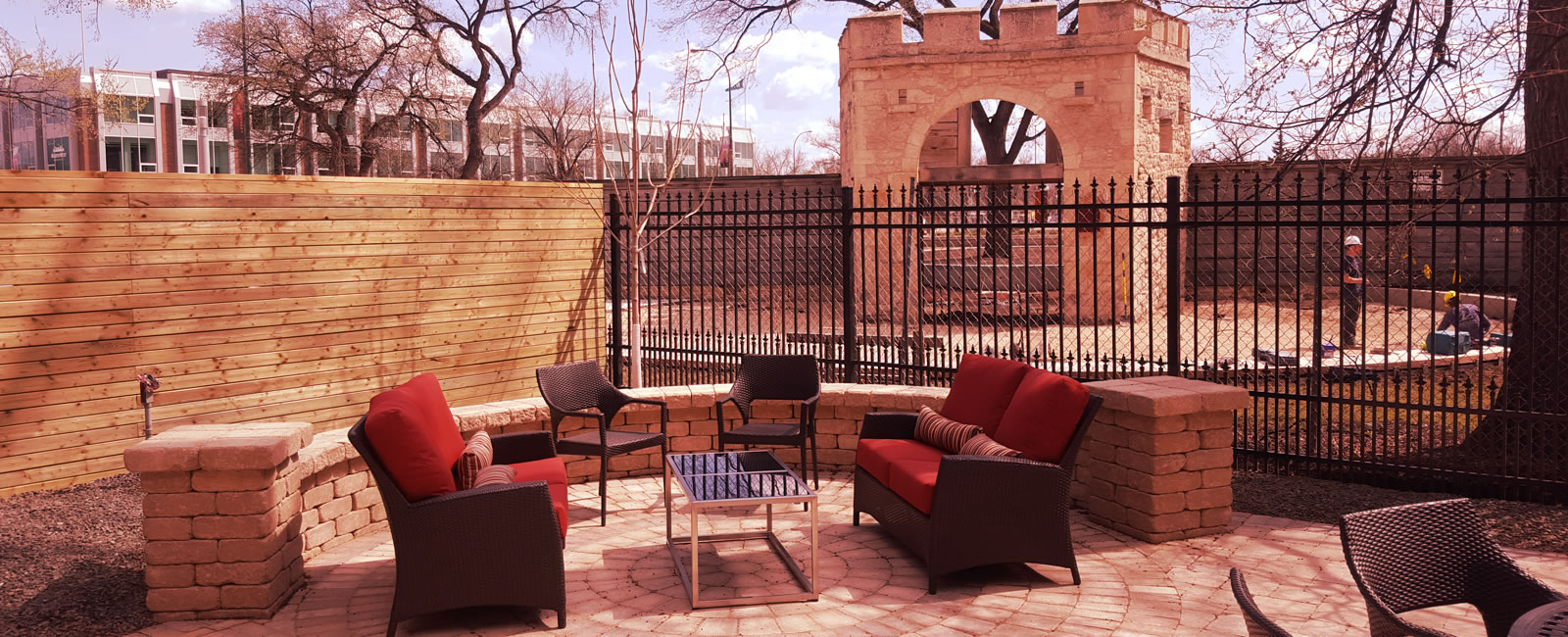Five Mistakes to Avoid When Installing a DIY Chain Link Fence
By Kurtis Kremski, Residential Fencing Manager
Here at Wallace + Wallace, we’re fortunate to have full-time, seasoned installers on staff with years of experience under their belt. Still, every year we find ourselves training 3 or 4 beginners to help get us through the busiest part of the season. Over the years I’ve trained countless people and know with almost 100% certainty the mistakes they’ll make on their first or second job in the field. If you’re planning to install your own chain link fence this year, and I encourage you try as it’s a great weekend project for the capable do-it-yourselfer, read on so you don’t make the same mistakes my new hires do.
1. Overlooking private utility lines and property pins
If you’re hiring a fence installer, they will work with Hydro to mark all public utilities on your property. But there are also private lines to consider which are sometimes overlooked. Be sure to contact a private locator to mark the location of any underground power, sprinkler or other lines that may be near your fence line, and don’t forget to contact Manitoba Hydro to mark the location of your public utilities. And be sure to stay within your property lines when setting your fence line.
2. Improper post placement
In our climate, fence posts should be 4 feet deep to minimize frost jacking. Unfortunately, rocks and tree roots don’t read building codes and sometimes get in the way. When this happens, it’s tempting to leave the post at whatever depth it happens to be and move on. However, the better option is to relocate your post several inches either way. Fence posts should be spaced 6 - 8 apart. To ensure structural integrity, DO NOT exceed 8 feet between posts.
3. Not accounting for uneven ground
Uneven ground can make it challenging to install a level fence. It’s important to note dips, bumps, elevation changes, and slopes, and mark them with spray paint or stakes before you get started. Excavate small bumps and use the material to fill in your dips or fill the dips with soil and or gravel. Slopes less than 10 degrees can be installed as if you were on level ground however, if your slope is greater than 10 degrees you will need to adjust the fence line to follow the slope. If the top of the chain-link fabric does not create a right angle to the terminal post, the fabric must be cut at an angle so that the tension bar can slide into the fabric at the proper angle.
4. Installing leaning posts
Along with the fence line, straight, completely aligned posts are critical to the overall fence aesthetic. When you’re pounding posts, it’s important that you check for level not only early but often. It’s amazing how quickly a level post can start leaning as it is pounded, even when it’s relatively deep in the ground. It is common to hit tree roots or rocks underground which may cause your post to lean and move out of level so check for level often.
5. Over/Under tensioning the mesh
When tying the mesh to the fence, it’s easy to over-crank your pull jack in an effort to get a super-tight run of fence. But there should be some play in the mesh to account for wind load and prevent your terminal posts from leaning. If you can grab the mesh 5 or 6 links back from the post, squeeze the diamonds, and still move it ¼ inch or so, you’ve got the right tension. And if you’re wondering where to find a pull-jack, no worries. You can borrow one of ours free of charge when you buy your materials from us.
Ready to install your chain link fence? Check out our how-to video series on You Tube. As mentioned, we also supply chain link materials for the DIYer. You can pick it up at our yard or we can deliver. Click here for a quote.
